Guest Post – Publishing Point Horror by Anne Finnis
Do you remember the Point Horror Book Series from the 90’s? The Point Horror Series was a series of young adult point horror books and was launched in 1991 by Scholastic always with the Point Horror banner on the spine and on the top of every point horror book. There were a number of authors that wrote these books for Scholastic: R L Stine, Diane Hoh, Caroline B Cooney, Sinclair Smith to name but a few.
They were basically what I was reading and enjoying as a young adult and thanks to the author Juno Dawson, who started #PointHorrorBookClub on her website in 2013, I have started to re-read these books that I used to rush to the shops every weekend and buy and sit for the whole weekend reading.
Juno announced in January 2015 that she was no longer able to carry on #pointhorrorbookclub and with her blessing I am going to try and carry it on with version 2! Juno has done a fantastic job – I hope I can keep up her good work *gulps*
For links to #pointhorrorbookclub posts old and new please click here
I know lots of people who hold Point Horror close to their hearts and one of those people is one of the people responsible for bringing Point Horror to the UK!
Therefore I have invited the lovely Anne Finnis to do a guest post for us all about publishing Point Horror, her love for all things Point Horror and being a part of British history !
It’s very exciting to have Anne here on Tales…I feel very honoured…and I have to admit this guest post is just fascinating and amazing! Thank you so much Anne!
*Hands microphone to Anne and hugs*
Publishing Point Horror
Love it or hate it Point Horror was a publishing phenomenon in the 1990s and I am delighted to say I had a part in it. I now meet people who grew up devouring Point Horror and tell me how much it was a part of their teenage lives. It makes me feel privileged to have been involved, though it reminds me that I must be getting old!
In the late ‘80s I was a young, upstart editor working at Hippo Books, part of Scholastic UK in Covent Garden.
We were the UK publishing outpost of Scholastic Inc – a publishing giant in the US. The US publishing output was enormous. Hippo’s was tiny in comparison and we published an eclectic mix of fiction, non-fiction and some novelty/activity books.
Every month we received a box of the books being published by Scholastic Inc and we were encouraged to publish some of what the Americans were publishing. (Most big publishing corporations have a dream that we should all be publishing the same books around the world though it rarely works like that.)
Scholastic Inc was enjoying massive success with The Babysitter’s Club. After much deliberating we decided to give The Babysitter’s Club a try in the UK. We rejacketed the books with covers that we felt would work better for our market and very quickly we too had a big success on our hands.
At about this time we realised that in these boxes from the States there were some spooky, glamorous and slightly dangerous-looking titles published under the Scholastic Inc teenage imprint Point.
There was little or no horror being published in the UK for teen readers, but I’d spent my teenage years being scared witless by authors like Stephen King, Ira Levin and Dennis Wheatley. I was desperate to have a go at publishing horror for a teen audience – I knew it was what I would have devoured had it been available. So I read some of the titles in the US boxes – The Lifeguard, Trick or Treat, April Fools – and realised they were page-turning, deliciously scary and with characters and plots based in teenage lives, albeit remote, glamorous, American ones.
I’m not sure many of the titles ever really constituted a horror story in the true sense of the genre (I’m squeamish and not very good with hardcore horror) but they were great psychological thrillers with plotlines that messed with your head – and that, to my mind, is much more enthralling.
So, Gavin Lang, the sales director, and I decided to give some of these titles a go. However, the authors were unknown – even RL Stine at this point – and there were several different authors so we needed to find a way to get them taken on by booksellers and noticed by readers. Our first decision was that we couldn’t publish them as Hippo Books – the logo was fun, but it was a cartoon drawing of a hippo’s big bottom – how was that ever going to be cool and scary? We thought the imprint name Point was good, though ultimately meaningless, so we decided to borrow it from the States. We then wanted to identify to readers exactly what these books were about. Point Psychological Thrillers was a mouthful. Point Horror told the reader what kind of story they were getting (or at least close enough) so we settled on that.
The American covers were bright, bold and stood out from the crowd. If we liked a particular cover image we used it. If not, our designer, Alison Gadsby, commissioned a new piece of artwork. She also devised the Point Horror logo and we agreed to pay for the cost of adding foil and/or a fifth colour to the lettering to make the titles really zing. At this time adult publishers were spending money on such lavish embellishments for their covers, but covers for kids’ books were generally very restrained.
We decided to launch with two titles – and here I become hazy. I think we launched in March 1991 with Trick or Treat by Richie Tankersley Cusick and Beach Party by RL Stine (April Fools was an early one too). We planned to publish a new book every other month, but we realised after the third or fourth title that sales were escalating and there was a growing demand for Point Horror. Because the US had been publishing these thrillers for a while there was a crop of titles which we could cherry pick from. We were therefore able to speed up publication and satisfy a growing appetite for the books.
At first some booksellers and librarians said to us “Point Horror? What is that? What does it mean?” But readers quickly got it. And we achieved what we’d been hoping for – booksellers began to display all the books together as Point Horror titles rather than by author name. It had been our biggest fear that the books would be stocked conventionally by the author’s surname, meaning the books would get dispersed across the alphabet and lost on the shelves. Soon most booksellers had a Point Horror section which looked significantly different from the majority of other books being published for teens at the time. (Hodder was publishing Christopher Pike, but apart from Hodder and us there was no one else in this market.)
There was a lot of resistance. Not everyone was keen – the books were trite, too scary, not good for children – all of those things. But Point Horror was getting kids excited about books. They were being swapped in the playground; readers were looking out for the next title. They were getting non-readers to read. What can be wrong with that?
By the end of 1991 we had a phenomenon going that lasted throughout the 1990s.
As the success of Point Horror grew British authors began asking if they could get involved. However, the stories were distinctly American and all of them no matter how scary had that American gloss, shine and accessibility that sets a lot of American writing apart from British (a vast generalisation I know).
By now we were working with some fantastic British authors and we were keen for them to share in the success. We’d already published an anthology of short stories from the US, 13 Tales of Horror, and I set about commissioning a UK one, 13 More Tales of Horror, as we felt an anthology was significantly different from the main list that we could risk doing something different. We published two collections of British Point Horror short stories – and the stories were darker, grittier and somehow much more real. However, they were taken up and published by Scholastic Inc in the States, which was gratifying.
We also wanted to commission and publish some full-length UK horror stories, so we launched Point Horror Unleashed to distinguish them from the American Point Horror brand. The stories were amazing but as with the short stories they were dark and gritty (arguably, something to do with British history and psyche).
Building on the success of Point Horror we went on to commission and publish very successfully other genre fiction for teenagers. Nothing ever quite reached the heady heights of Point Horror but it was a great time in which we were actively seeking out authors and asking them to write for the Point list.
Ultimately, from being controversial and daring, Point Horror gradually became old-hat and mainstream. Readers, editors and buyers move on and look for something new, and so gradually Point Horror declined and was discontinued.
I left Scholastic when I was expecting my third daughter in 1998, but looking back I’m amazed at how much we achieved in a fairly short period of time and what an exciting time it was. And now when I meet people who loved Point Horror, I feel proud and privileged to have achieved something that’s always motivated my career – publishing stories that kids really want to read!
Anne Finnis
Photos by Caitlin Smith, my third daughter, mentioned above.
Also check out Anne’s post for #Usborneyashelfies about Point Horror here
The #PointHorrorBookClub even gets a mention! Thanks Anne!
Do you have a Point Horror question for Anne?
Anne has been lovely enough to agree to answer any questions we may have following the guest post or Point Horror related?
Send me your questions by leaving a reply and I will put them to Anne in my Q&A which will hopefully be love for next month’s Point Horror Book Club!
Thank you Anne!
Anne is now the Fiction Deputy Director at Usborne and feels privileged to have worked with so many talented people. Mum of three. Wannabe salsa dancer. Love chats around her dining table.
Why not join in Point Horror Book Club and the discussion on the 13th of every month?
Don’t forget to use the #pointhorrorbookclub on twitter so I can see your thoughts or tweet me using @chelleytoy
Are the Point Horror books we loved as a teenager still our favourites on the re-read? Are you new to Point Horror? Has our opinion changed? Are they still as good? Do they stand up to modern day YA Horror? Or are the a whole load of cray cray?
You can find all #PointHorrorBookClub posts old and new here
A huge huge thank you to Anne for featuring on Tales and a huge round of applause for such a fab guest post!
I honestly cannot thank Anne enough! Point Horror was my childhood and I feel so honoured to be able to still chat about it today!
*claps hands excitedly*
Do you remember Point Horror? Which was your favourite? Would you like to join in on #pointhorrorbookclub ?
Happy Point Horror-ing!
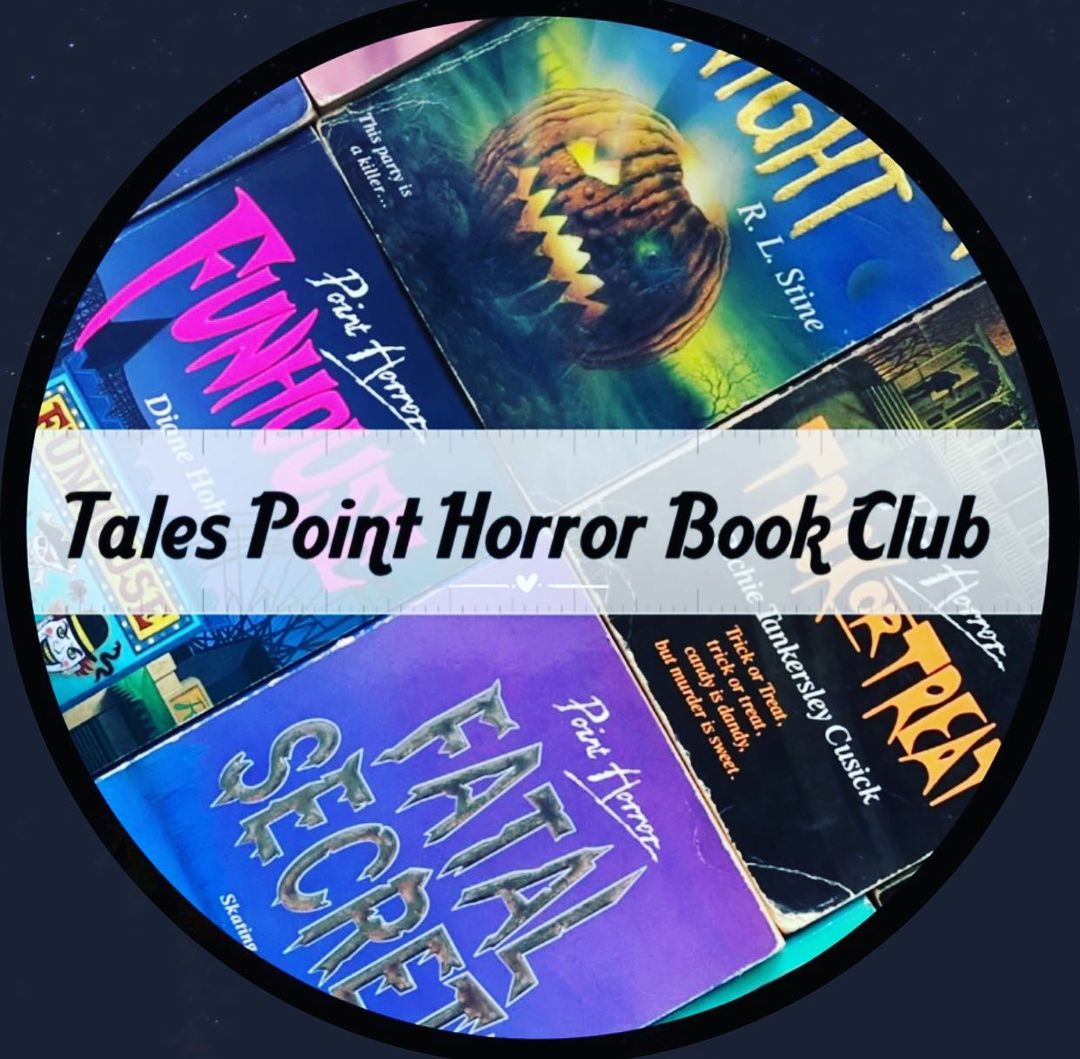
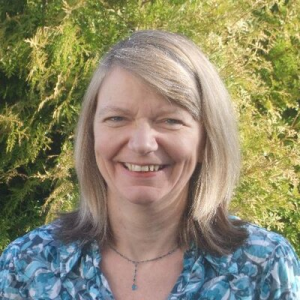
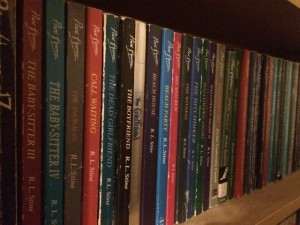
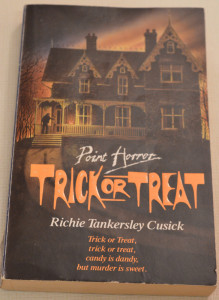
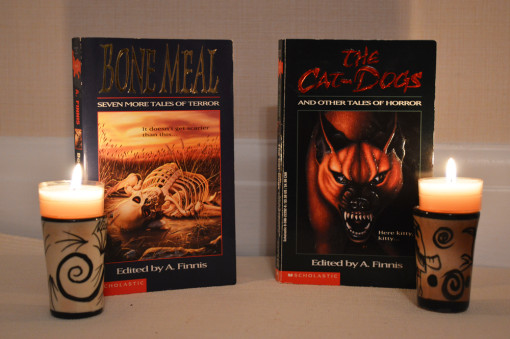
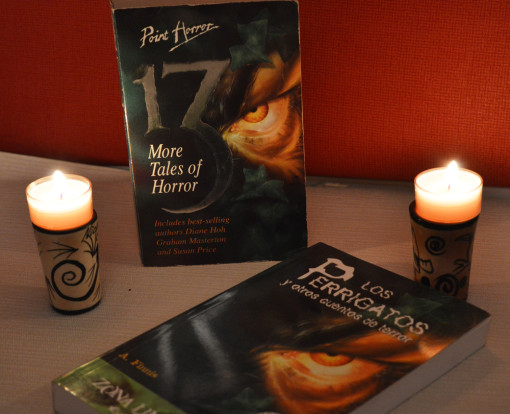
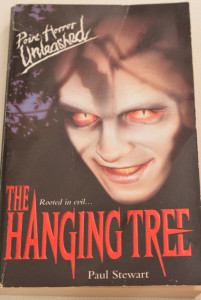
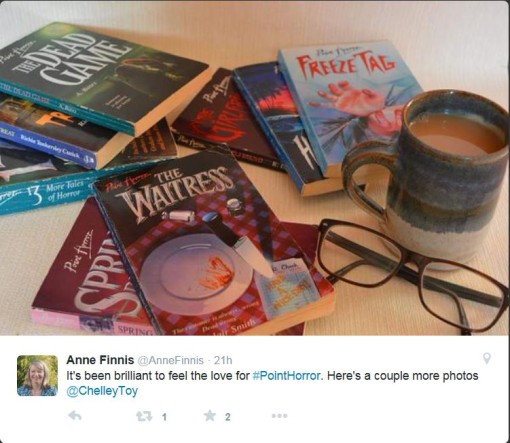
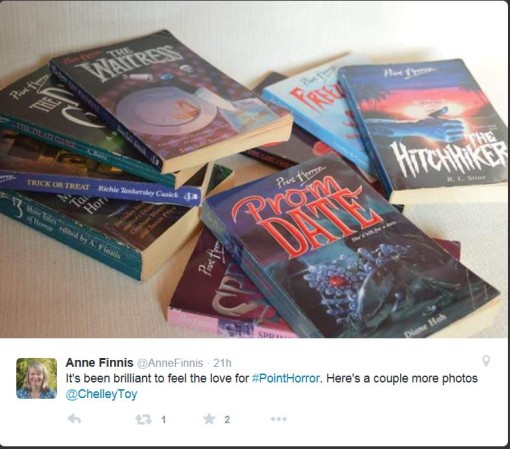
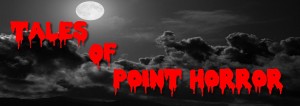


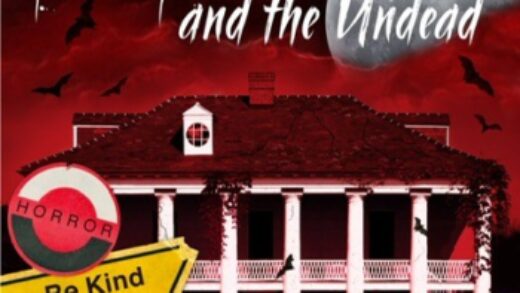
 The Invitation by Diane Hoh
Published in UK
The Invitation by Diane Hoh
Published in UK



 Beware spoilers a
Beware spoilers a















Wow, LOVED this! Thanks Anne and Chelley for posting ?
I have LOADS of questions for Anne. Here goes:
Did you have a favourite PH author or title?
Did certain authors work better or have more success for a UK market than others?
I always loved the UK covers much more than the US versions (Freeze Tag was a personal favourite) – do any stick in your mind?
Did Scholastic take into account feedback from the UK audience, or were commissions targeted solely at the US and then you chose from what was available?
Not a question but THANK YOU for bringing PH to us pasty British teens. I devoured them at the time, and still remember checking the shelves of WHSmith every week for new titles
I’ll probably think of more!
Hi Paul! Thanks for the questions I will pop them together for Anne. She may not be able to answer all of them but I know she will try her very best
Wasn’t it such a fab post!
Anne – I know I have said this on email already but – You are AMAZING! And thank you for not only this post but for playing a part in my childhood growing up and even my adulthood reliving them ️xx
Also, what did you make of the rival series that emerged in the 90s, like Nightmares, Fear Street, etc? Christopher Pike was targeted a little older, I guess, but him too?
And A Bates was pretty bold in saying that Pike and RL Stine were so prolific that they pretty much swamped and stifled the market. Do you agree?
Brilliant read!!
I was one of those 90’s teens who raided the shelves of Waterstones, Dillons, WH Smiths, John Menzies every Saturday to see if i could spot a new Point Horror book. No internet back then so was no way of googling or tweeting the publisher to know!
Afew Q’s for Anne if possible!
1 – I remember writing to scholastic uk in the mid 90’s (not sure when) with praise for the books and a short synopsis for a novel i’d love to see written. I remember receiving a lovely reply in a brown A4 envelope with card backing on it and feeling all special when i saw the scholastic letterhead. The reply basically said thanks for being a fan and that my suggestions would be passed on. Low and behold about 12 – 18 months later i remember seeing a new book ‘Spring Break’ and it was named the same and soooooooooo similar to what my 12 year old self had come up with, even more, the plot details of the book followed by little one page treatment too. Reading Bates / Cooneys interviews about how the publisher pretty much gave some of their authors a plot / theme / title to write a point horror story – could it be that my little old submission was actually the basis of this book? (sadly the actual book wasn’t one of my favourites in the end, but i was so stoked at the time that it was possibly my pitch that inspired it).
2 – Some of the earlier Point books released in the USA never made it to the UK market. Was there specific reasons as to those books being omitted from the Point Horror catalogue? .
3 – I remember as a kid some of the Nightmare Hall titles just felt so disconnected from the first few, in fact some of them didn’t even seem to be written by Diane Hoh. Were they just re-branded and edited to fit the series? Also i know some of them didn’t make the UK as per question 2. How come?
4 – With the success of books turned tv shows like Babysitters club, Goosebumps, Sweet Valley High etc .. was there ever any talk / plans of making the Point Horror books into a weekly teen anthology type series. Or even a series based on Nightmare Hall or even The Forbidden Game would have been awesome.
Hi Steve! Thanks for reading and joining in. I am currently complying the questions for Anne (running a little behind) so I will pop some of these questions to her and will do another blog post soon with them on. You should join in with Point Horror Book Club
Thanks Chelley!
I would love to join in alas I moved to Australia a few years ago and all of my old point horror books are in my mums attic back in the UK. I’m definitely on a nostalgic 90’s reminiscing trip right now though so kinda tempted to ask her to dig them out and get a quote to post them all across (thinking it might be big bucks since there’s about a hundred of them haha)
Hi!
Point Horror was popular in Australia too, but we got the US covers with the ‘Point’ branding unmodified. I remember loving these books as a kid just thinking I was so cool reading them. They recently came back to mind and it’s so funny to read about people who are also remembering them. It’s like ‘where did they go..?’ I recently ordered some online. The first to arrive were ‘Funhouse’ by Diane Hoh, and ‘Hit and Run’ by R.L.Stine.
Oh yes Point Horror was hugely popular in Australia….I’ve had a few Australians join in on the #PointHorrorBookClub and a lot of the books are on kindle now if physical copies are hard to come by
Thank you for this wonderful article. It’s always really interesting to find out the history of a phenomenon like this and hear the story from someone involved. I love the covers of these books. They did seem glamorous, and I’m really enjoying just looking at them again and reading them. Just nostalgia.
Hi Russell…..huge apologies for my delay in responding to you! Thank you for checking out the post….. its one of my absolute faves hearing about how the UK Point Horrors came to be as they were such a huge part of my teens and as you say pure nostalgia! I’m restarting the #PointHorrorBookClub so do look out for new posts soon and do feel free to join in